Life: AD c. 213 – 268
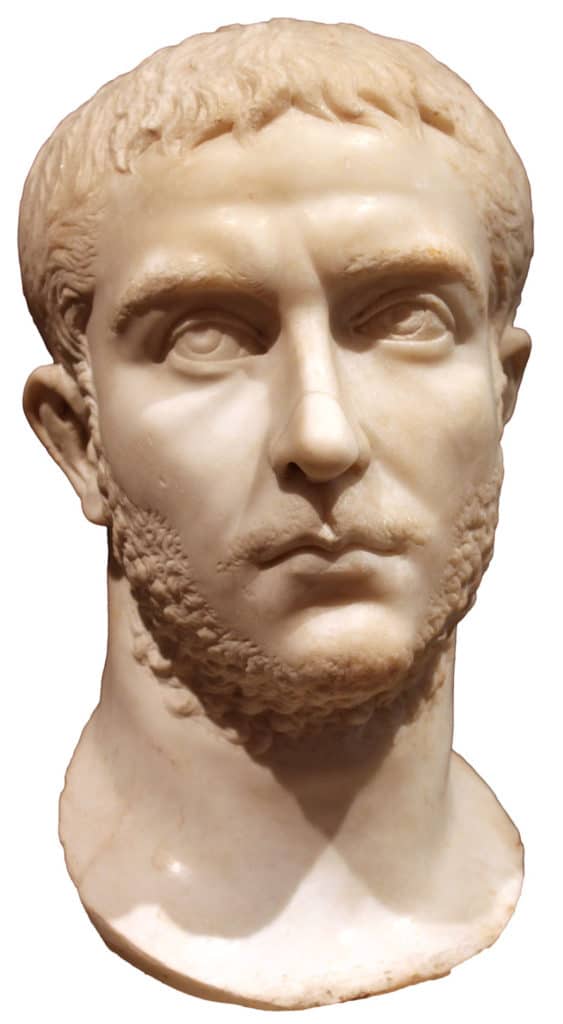
- Name: Publius Licinius Egantius Gallienus
- Born AD ca. 213.
- Became emperor in October AD 253.
- Wife: Cornelia Salonina (three sons; Licinius Valerianus, Licinius Salolinus, Licinius Egnatius Marinianus).
- Died near Mediolanum (Milan), September AD 268.
- Deified AD 268.
Early Life of Gallienus
Publius Licinius Egnatius Gallienus was born in about AD 213. This means that he was about 40 years old when his father Valerian, in AD 253, was hailed emperor by his troops in Raetia. Gallienus was made Caesar immediately by his father. But within a month, when Valerian got to Rome, Gallienus received the rank of Augustus.
Compared to other Roman emperors of the age, Gallienus was an exception, as far as he was not a soldier-emperor. He was rather a thoughtful, intellectual ruler, possessing sophisticated Greek tastes. However, this made him deeply unpopular with the gritty Danubian generals, who very much understood it as their right to choose a leader among their own ranks to rule the empire. His father handed him responsibility over the western provinces while he would take the fight east to the Persians. However, the two should never meet again, as Valerian fell into the hands of the enemy and died in captivity.
Gallienus’s First Military Campaigns
If the Danubian military elite didn’t like Gallienus, then he certainly soon proved that he was a capable military leader. Between AD 254 and AD 256, he campaigned along the Danube, securing this troubled frontier against the barbarians. In AD 256, he then moved west to fight the Germans along the Rhine.
Seeking to continue the dynasty of his father, he raised his eldest son, Licinius Valerianu, to the rank of Caesar in early AD 256. But when in AD 258, the emperor returned to the Danube to renew his struggles with the barbarians there, his heir died. In his place, his brother Salonius was raised to be Caesar.
Then, in AD 259, the chaos began, which was to haunt Gallienus throughout his reign. Gallienus was still fighting along the Danube when a message reached him that further west, the Juthungi (Jutes) and the Alemanni had crossed the river and were descending into Italy.
In Italy, a force was hastily assembled to stop their advance on the capital. Realizing an advance only possible against stern opposition, the barbarians turned back and headed back for northern Italy, only to be met by Gallienus, who had marched his troops into Italy from the Danube. The barbarians suffered a crushing defeat at Mediolanum (Milan) and were later beaten again at Augsburg in the spring of AD 260, with thousands of their Roman captives being freed.
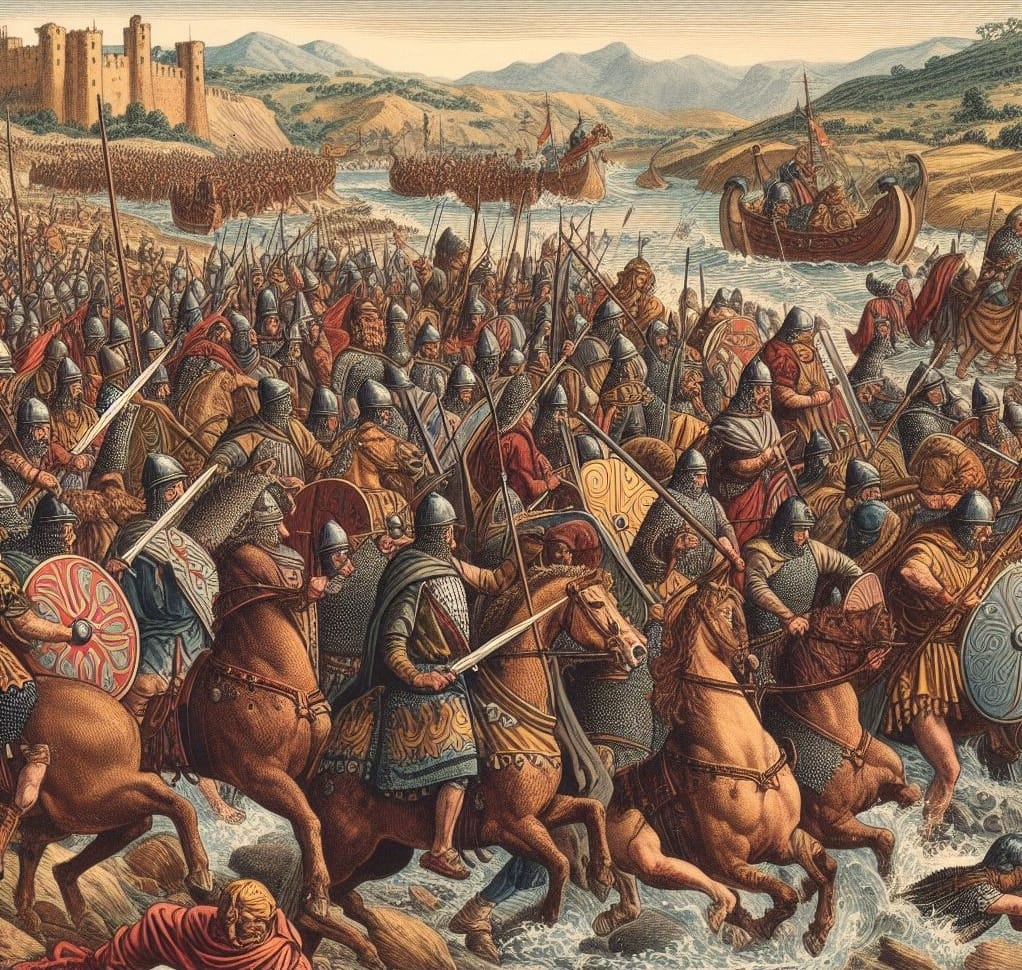
But this success cannot disguise what was a desperate situation for Gallienus. The Franks were attacking in large numbers, crossing the Rhine and forcing their way into Gaul. Some even reach as far as Tarraco (Tarragona) on the Mediterranean coast. Some even got on boats, crossing the Mediterranean and raiding the North African coast, including the port of Tingitana.
Gallienus’s Struggles
The Sueves (Suevi) conquered the strategic land known as Agri Decumates, which covered the areas of the upper Rhine and Danube. Weakened by such onslaughts, Gallienus could do little but accept the establishment of a realm by the Marcomanni north of the Danube. A challenge earlier emperors would have never accepted. In order to come to peaceful terms with this new kingdom, it is said that Gallienus even took a Marcomannic princess as a second wife.
Then, by autumn AD 260, the dreadful message of Valerian’s capture by the Persians reached Gallienus. If Gallienus had always been unpopular among the military leaders, then, now, with his father gone and Roman authority crumbling, the rebellion was in the air.
The first to act was Ingenuus, the powerful governor of Pannonia. He had himself hailed emperor at Sirmium by the troops of Pannonia and Moesia. These armies were merely the remaining garrison of the two provinces, as most were campaigning with the emperor. With such limited support, Ingenuus was soon defeated at Mursa in Pannonia by the returning Gallienus and his general Manius Acilius Aureolus. But the late Ingenuus’ Danubian troops remained mutinous and soon after hailed Regalianus, the governor of Upper Pannonia, emperor. Within only a few weeks, Gallienus returned once more and crushed the rebellion.
With Gallienus occupied with Regalianus, the command of the Rhine armies was left to Marcus Cassianius Latinius Postumus, governor of Lower Germany, with the emperor’s son Saloninus, guarded by the praetorian prefect Silvanus, staying at Colonia Agrippina (Cologne).
The Rise of Postumus
But Postumus, confident after defeating a barbarian raid, fell out with Silvanus and marched on the city. In defiance, Saloninus was declared joint emperor with Gallienus, but it was an empty gesture. Shortly afterward, the garrison of Colonia Agrippina surrendered, and the young emperor, together with Silvanus, was murdered. Postumus was now proclaimed emperor and a significant group of western provinces of the empire sided with him. Meanwhile, Gallienus, occupied with revolts and barbarians along the Danube, was not yet free to act against him.
But in late AD 260, yet another serious rebellion took place. The capture of Emperor Valentinian left the defenses of the East in utter turmoil. Antioch fell to the advancing Persians. Until two generals, Macrianus and Callistus (whose nickname was ‘Ballista’), rallied what was left of Roman troops and defeated the Persian king Sapor at Corycus, halting his advance and forcing him to withdraw back behind the Euphrates. Of these two Roman generals, Macrianus now decided the time was right to challenge Gallienus’ rule. Though, knowing himself too old, he nominated not himself but his two sons, Fulvius Iunius Macrianus and his Fulvius Iunius Quietus, as emperors of the east, with Antioch as their capital.
This rebellion won widespread recognition in Syria, Egypt, and Asia Minor (Turkey). But then they made a vital error by marching against Gallienus. With Quietus staying behind to oversee the government of their empire, his brother and father led their troops west to take power. Gallienus, however, sent his general Domitianus against them, and they were defeated and killed in the Balkans.
Forming an Alliance and Campaign in the West
Gallienus found a rare ally in Odaenathus, the very powerful prince of Palmyra, granting him command of the armies in the east. At once, Odaenathus attacked Quietus, the remaining rebel, at Emesa and defeated him. The death of Quietus only saw yet another pretender to the throne arise, as Mussius Aemilianus, the governor of Egypt, who had supported Macrianus and Quietus, now had himself hailed emperor. But in AD 262, he, too, was defeated by General Theodotus and executed.
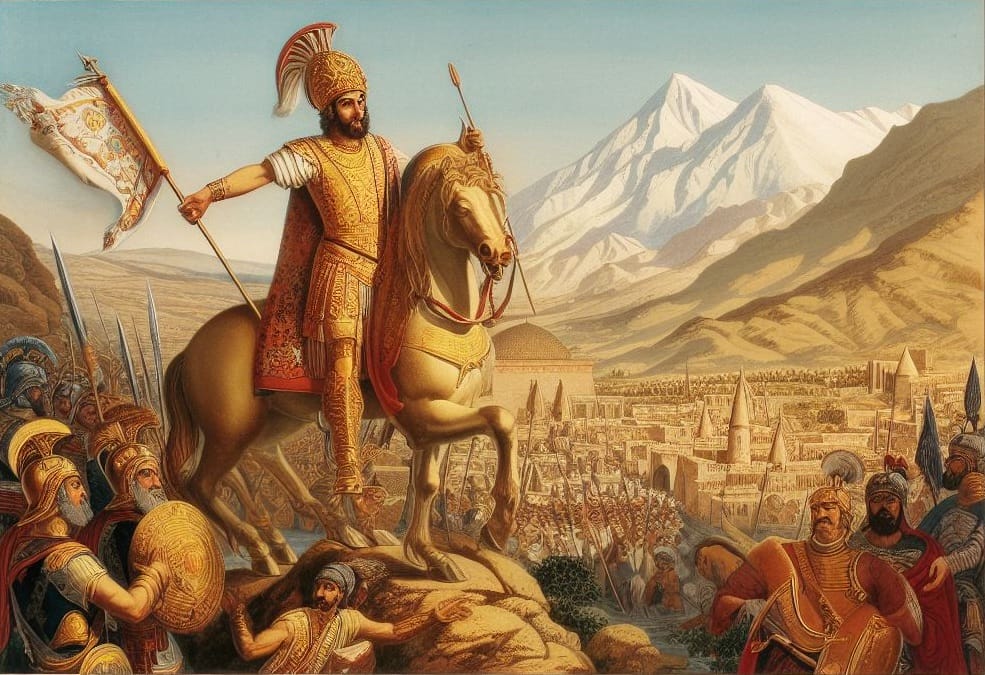
Also, in AD 262, Odenathus launched a five-year campaign against the Persians, re-conquering much of Mesopotamia and Armenia. In the west, Gallienus, having gained back at least some limited control over his territories, set out to crush Postumus in the spring of AD 265, advancing deep into Gaul.
Postumus, knowing his forces inferior, evaded his attacker, not granting him a pitched battle. And so, without being able to deal that all-important crushing blow, Gallienus couldn’t defeat his elusive foe. And Gallienus’ everlasting bad luck caught up with him again when he was severely wounded in his back by an arrow while on this campaign. And so, with its supreme commander bedridden, the campaign had to be abandoned. This left Postumus the undisputed ruler of the ‘Gallic Empire’.
Campaign in the East
In the east, after outstanding victories against the Persians – most of all defeating the Persians at Ctesiphon in AD 266, Odenathus was awarded the title of imperator by Gallienus. Following this, Odenathus set out for Asia Minor (Turkey), where he would drive out invading Goths. But alas, he was not to find much joy in his newfound glory in his many victories, as he was murdered in AD 267.
As his eldest son, too, was killed, his position fell to his widow Zenobia, who ruled through her son Vaballathus. With Odenathus’ death, Gallienus appeared to reach the decision that the time had come to put an end to the power of Palmyra. Some doubtful rumors even suggested that he had been behind the plot which saw Odenathus killed.
The praetorian prefect Heraclius, whom the emperor now sent out to crush Palmyra, though was easily defeated. And Palmyra was still to play a leading role in the coming years of Roman history after Gallienus’ death. But Gallienus himself was to have far greater problems to deal with than either the Palmyrene queen Zenobia or the ‘Gallic’ emperor Postumus.
The Greatest Gothic Invasion
In AD 268, a threat emerged which should threaten to bring the entire empire crashing down. The greatest Gothic invasion so far came crashing into the Balkans. The seaborne Heruli supplied a fleet that carried vast armies down the coast of the Black Sea to land in Thracia and Macedonia. Other huge forces crossed the Danube in Moesia.
Seeking to save Athens, Gallienus marched east. He couldn’t prevent the sack of the ancient city, but nonetheless, he came upon the main Gothic force at Naissus and defeated it at the gruesome battle of Naissus, the bloodiest battle of the third century, which left thirty to fifty thousand Goths dead on the field (AD 268). Having perhaps saved the empire from oblivion, Gallienus could have dealt the Goths a shattering blow by hunting down and defeating their remaining forces. But even at this brief moment of glory, Gallienus should have to once more rush to challenge yet another pretender to his throne.
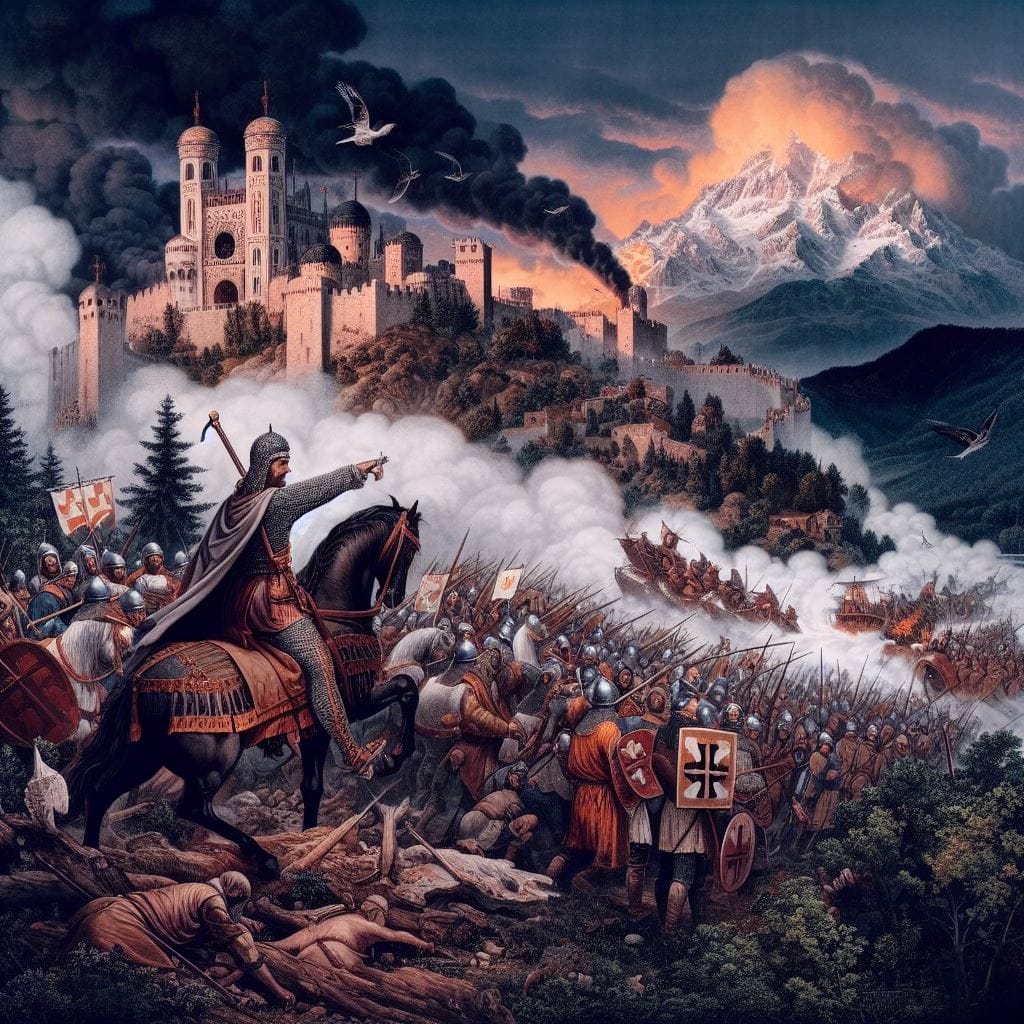
This time, his general Aureolus, who had been left at Mediolanum (Milan) to guard against any attack from Postumus, was the one to betray him. The precise details of Postumus’ betrayal seem unclear. He appeared to try and change sides of Postumus ‘Gallic Empire’ in early AD 268. And yet, there was not even an attempt by Postumus to come to his aid when Gallienus marched against him. More so, having withdrawn into Mediolanum after suffering a defeat at Ponirolo, Aureolus pronounced himself emperor.
But Gallienus was not to gain victory over Aureolus. The Danubian military elite had finally had enough of the emperor they had never liked. A plot was hatched among the praetorian prefect Heraclianus and a group of high-ranking commanders. Among these officers were the future emperors Claudius Gothicus and Aurelian.
The Siege of Mediolanum
On a night in September AD 268, at the siege of Mediolanum, the alarm was suddenly raised in the camp of the emperor. In the brief moment of confusion, Gallienus was struck down in the dark as he emerged from his tent. As a last gesture of disrespect to this, most unfortunate of emperors, the Romans should lay Gallienus to rest not in one of the great mausoleums in Rome but in a tomb nine miles south of the capital, along the Via Appia. Alas, he was deified by the senate at the request of Claudius II Gothicus, one of the men who had brought about his assassination.
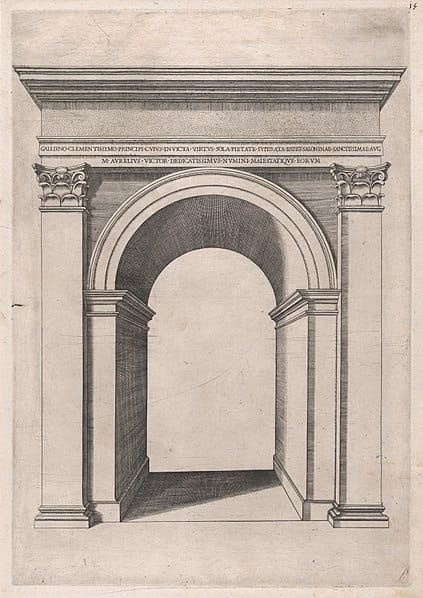
People Also Ask:
Was Gallienus a good emperor?
Gallienus was a highly cultured and decent emperor. He showed clemency toward his enemies, pardoning a general (Aureolus) who revolted against him, settling Alamanni tribes he had defeated within the empire, and usually doing all he could to preserve peace in the long run and avoid unnecessary bloodshed.
Who was Emperor Gallienus?
Gallienus, Publius Licinius Egnatius Gallienus (born c. 218—died 268), was a Roman emperor jointly with his father, Valerian, from 253 until 260, then sole emperor to 268. Gallienus ruled an empire that was disintegrating under pressure from foreign invaders.
What did Gallienus do as emperor?
He ruled during the Crisis of the Third Century that nearly caused the collapse of the empire. He won numerous military victories against usurpers and Germanic tribes but was unable to prevent the secession of important provinces.
Who succeeded Gallienus?
While besieging the insurgent general in Milan, Gallienus was murdered by his senior officers; his cavalry commander, Claudius, succeeded him as Claudius II.

Historian Franco Cavazzi dedicated hundreds of hours of his life to creating this website, roman-empire.net as a trove of educational material on this fascinating period of history. His work has been cited in a number of textbooks on the Roman Empire and mentioned on numerous publications such as the New York Times, PBS, The Guardian, and many more.
